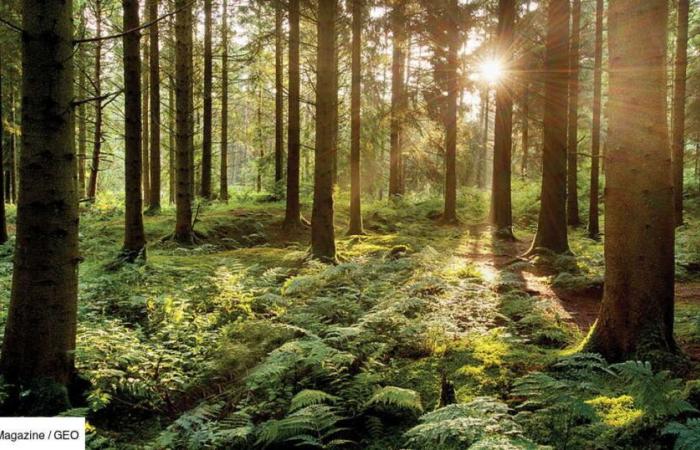When a solar eclipse occurs, the world stops. Animals change behavior and human beings turn to the sky to admire that night in broad daylight. But in the forest too, a mystery is played out. As a fascinating study conducted by an international team of Southern Cross University (SCU) and the Italian Institute of Technology (IIT) and published in Royal Society Open Science, the trees are revealed by an international team. During an eclipse, the older trees send signals to the youngest to announce the imminence of the phenomenon, and lead them to prepare for it.
Trees use bioelectric signals
The trees, plants and animals that populate the forest form a complex microcosm. The way the elements that make up this world communicate with each other is inaccessible to us. However, by holding out and observing carefully, we have the intuition that the forest brushes with signals and information. The researchers at the origin of this study chose to take an interest in the Costa Bocche forest, in the Dolomites, and managed to record the way in which birchs use bioelectric signals to prepare for solar eclipses.
“This study shows that the early and synchronized responses that we have observed are essential to understand how forests communicate and adapt, revealing a new layer of complexity in plant behavior”observes Professor Monica Gagliano from the University of Southern California, cited in New Atlas.
Old trees alert the youngest
All living organisms have an electromagnetic system, that is to say electrical communication routes. As this study reveals, it is precisely this electromagnetic system that birchs use to warn their fellows of an environmental disturbance. Even before, in this specific case, that the eclipse occurs. To make these observations, the researchers used a network of low -power sensors set to record these invisible signals simultaneously.
They then found that the oldest trees in this forest network were the first to send the alert message. “We have discovered a deeper dynamic synchronization, unknown so far, which is not based on exchanges of matter between trees”explains Professor Alessandro Chioletio, of Iit. “We now see the forest not as a simple collection of individuals, but as an orchestra of plants in phase correlation”he adds.
A way for trees to minimize disturbances linked to the eclipse
But what are the trees say? To ensure their normal functions, in particular the transport of nutrients and the regulation of water, plants are very dependent on day-free cycles. The occurrence of a solar eclipse is therefore likely to upset the functioning of the tree and even to affect its health lastingly. Thanks to the sending of these signals, the trees pause to protect themselves from these disturbances.
“The fact that the oldest trees react first – potentially guiding the collective response of the forest – says a lot about their role as memory of past environmental events”Explique Monica Gagliano. “This discovery highlights the crucial importance of the protection of ancient forests, which serve as pillars for the resilience of ecosystems by preserving and transmitting invalid ecological knowledge”, concludes the researcher.








